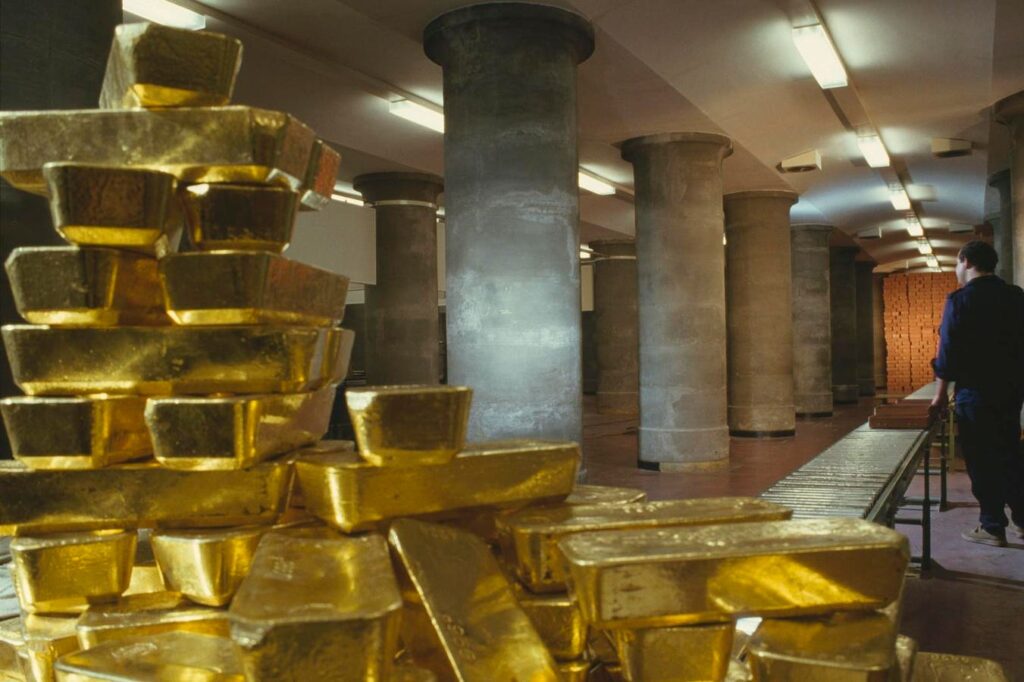In April, I penned an article titled “The Gold Investing Madness Is Just Getting Started,” as gold had recently broken through a four-year trading range, reaching an all-time high of around $2,200 per ounce, mirroring the excitement surrounding college basketball’s March Madness. This surge was primarily driven by unprecedented foreign central bank buying, which was part of a broader strategy to reduce dependency on the U.S. dollar. However, despite these encouraging signs, key obstacles remained, including the Federal Reserve’s unchanged interest rates, a strong dollar, and U.S. investors selling off gold ETFs. I anticipated that the prevailing macro-economic environment would soon shift in gold’s favor, signaling the beginning of a more significant trend.
Fast forward to the present, and gold now trades at approximately $2,650 per ounce, marking an impressive 20% increase since my last writing. This significant price rise has been fueled by consistent foreign central bank buying, which has continued to be robust and might even be understated. Additionally, two out of the three previous headwinds for gold have now turned into tailwinds: the Federal Reserve has started cutting interest rates, and the dollar has begun to weaken. These developments have set a favorable stage for gold, and a deeper exploration of each factor reveals their impacts on the market.
The first factor contributing to the rising gold prices is ongoing central bank demand. In the first half of 2024, record levels of gold purchases from foreign buyers were reported by the World Gold Council. This trend has been prominently led by both adversarial nations like China and Russia, alongside allied countries such as Poland. For instance, Poland’s National Bank emerged as the largest buyer in the second quarter, increasing gold’s share to 13% of their total reserves. Also noteworthy is India’s Reserve Bank, which has consistently added gold every month in 2024, surpassing previous annual totals. BofA Securities now ranks gold as the world’s second-largest reserve asset, highlighting its rising prominence among currencies.
While the current central bank activity is notable, indications suggest that the overall demand for gold may be underestimated. Reports indicate that China, previously the largest buyer, paused its purchases in May 2024, despite gold only constituting 4.9% of its total reserves. Other intriguing developments include substantial and secretive gold purchases by Saudi Arabia, with estimates suggesting they acquired 160 tons since early 2022. Their official gold reserve figures have not been updated since 2008, leaving room for speculation about the extent of their purchases. These examples suggest that central bank demand for gold is far from over and may be underreported, with both friendly and adversarial nations continuing their interest.
The second catalyst for the bullish outlook on gold is the Federal Reserve’s recent rate cuts. On September 18th, a notable cut of 50 basis points was implemented, responding to a market that was already adjusting to declining 2-year interest rates. Despite still-high inflation rates, many forecasters predict a potential uptick in inflation closer to 4%. This scenario creates a situation where falling interest rates juxtaposed with elevated inflation lead to suppressed real rates (interest rates adjusted for inflation), a dynamic that tends to support gold, a non-yielding asset.
Additionally, the weakening of the U.S. dollar serves as a key driver for high gold prices. The U.S. is grappling with increasing budget deficits, estimated at $1.9 trillion, and a national debt approaching $35 trillion, compounded by a trade deficit that has persisted for over fifty years. These economic struggles, along with geopolitical tensions, have prompted BRICS+ nations to seek alternatives to the U.S. dollar. Gold emerges as an ideal candidate, as it is not tied to any specific country’s debt, thereby positioning itself as a preferred reserve asset amidst growing global uncertainties.
Despite recognizing these macro-economic trends favoring gold, another important factor that has yet to materialize is increased retail participation in U.S. gold exchange-traded funds (ETFs). Even with gold’s market cap surpassing $17 trillion and hitting all-time highs, retail and institutional investors have yet to significantly allocate their resources towards gold. A study revealed that many financial advisors in North America allocate less than 1% of assets under management to gold, indicating substantial room for growth. Once retail and institutional buying increases—which I expect it will—the gold market could experience even greater momentum, supporting a more exuberant phase of gold investment.
Nevertheless, potential challenges remain, particularly as October has historically been a tough month for gold prices, evidenced by only slightly positive average returns since 1968. With the upcoming election and considerable optimism already factored into rate cuts, moments of weakness could arise. However, these fluctuations should be viewed as buying opportunities. Gold bull markets, driven by structural demand, are likely to persist. My recommendation remains steadfast: maintain and increase gold exposure, as we navigate these exciting and transformative times in the gold market.

